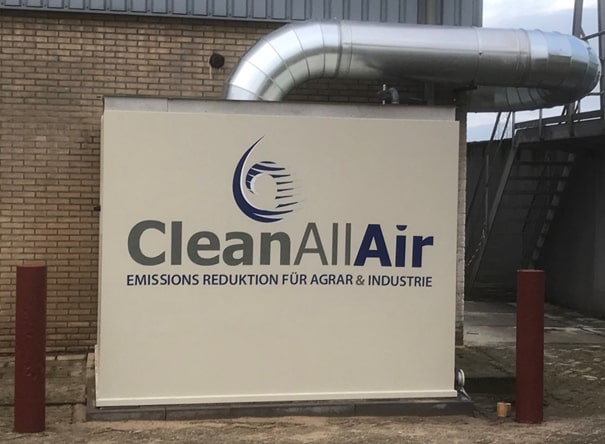

CleanAllAir air washers
for odor & air purification


CleanAllAir air washers
for odor & air purification


CleanAllAir air washers
for odor & air purification
Dust washers
Dedusting of airflows:
There are many situations in which dust is released and is discharged through the outgoing airflow. Dry matter capture / reduction systems are often used, which also work well.
However, there will come a point where the dry matter is released and yet again can cause problems. At that moment the dust-air scrubber from CAA is a solution.
In addition, there are many situations where dust is released in a humid environment or where the dust itself is relatively damp or even wet. In these cases, dry matter capture systems are not ideal. It is precisely in these situations that the CleanAllAir dust-air scrubber is the right solution. From small airflows (250m3/hr) to large airflows (>500,000 m3/hr), we can offer the solution with our systems to remove dust from the outgoing airflow.
It regularly happens that legislation and regulations, for example the environmental law, require the dedusting of an outgoing air flow at an air scrubber. CleanAllAir uses two variants that best suit an air scrubber. Both dedusting installations capture dust by means of water.

The most robust air washing systems
As they used to say:
“May cost nothing and never break”
Our systems are still running after 20 years!
Top Quality Service & Expertise
- Own breakdown service
- powerful & personal
- Literally the best in the market
Venturi dedusting installation
A Venturi dust scrubber uses the kinetic energy of an airflow to remove dust through impact. The dust-contaminated airflow is accelerated through a constriction section, increasing the airspeed to 45 to 120 meters per second. Water is injected before the acceleration and atomized by the high air speed. Dust particles collide with and are encapsulated by millions of tiny water droplets. To prevent the accumulation of dust at the entrance of the Venturi, a sharp transition has been made between the dry and wet zone.
In the section behind the constriction, the static pressure is reduced by decreasing the airspeed. The water-saturated airflow changes direction in a bend through which water flows, after which the air enters a cyclone. In this cyclone, the droplets are “flung” from the air. Clean, drip-free air leaves the dedusting system via the drip catcher.
Dedusting using the CAA slat system
A cheaper alternative is dust removal by stripping specially placed plastic slats. The air containing dust particles collides with these slats, which is sprayed from two sides with specific nozzles. The sprinkler system is made up of different types of sprinklers in order to capture as many dust particles as possible and is tailored specifically to the customer. In this way, dust particles are captured and discharged directly into a water stream. The moist air leaves the scrubber through a drip catcher.
If an air scrubber is connected directly behind the dust scrubber, the moist air has no adverse effect on the next phase. This can be easily built in. This is usually already included in the design when there is a lot of (fine) dust in the incoming airflow.
CleanAllAir dust-air scrubber in practice
Various dust-air scrubbers have now been successfully installed both at home and abroad. These have been running successfully for several years now. Its effectiveness has been amply demonstrated in practice. This type of dust-air scrubbers are in principle suitable for all industries.
Please feel free to contact us to find out what the solution is for your specific situation.
